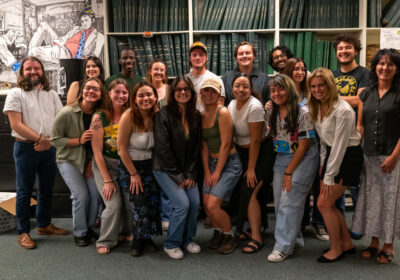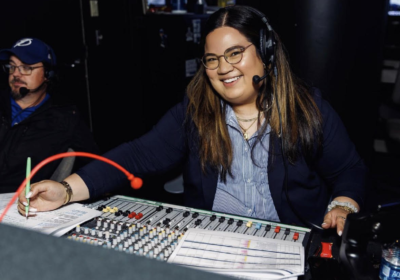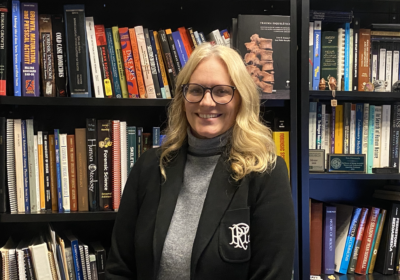Centre Gallery gets Cultural
Some may not see graffiti as art, but a new exhibition documents the spray-painted work that appears throughout the southern Mexican city of Oaxaca.
The Marshall Student Center (MSC) Centre Gallery’s “Artefacto Cultural” exhibition, which ends Friday, is USF professor and visual artist G.B. Stephens’ photographic collection of the area’s graffiti between 2002 and 2008.
“Graffiti art is everywhere on the streets, and (Oaxaca) decided to embrace it instead of condemn it,” Stephens said.
Stephens, an associate professor of theater design in the School of Theater and Dance, said he has visited Oaxaca twice per year for the last 12 years – both to document graffiti and to learn and practice Spanish.
Stephens said Oaxaca’s graffiti murals are a representation of the city’s everyday life, suffering, repression and violence.
One work titled “Collage de Violencia” reflects on the topic of domestic violence. On the right side of the graffiti piece, there is the face of a battered woman with a bleeding nose and a purple circle around her right eye.
The left side shows another woman being hit by a man. Newspaper articles related to domestic violence are pasted around both women – all of this against a dark blue background.
Most of the newspaper articles are ripped off the wall and some are completely gone. Stephens said he was able to take the picture shortly after it was painted.
“I came back two weeks later to see the artwork, and it was sort of destroyed,” he said. “Maybe the city government didn’t want this to be shown.”
Stephens said it is important to document graffiti because it represents neighborhoods’ social concerns.
“Street art represents the heart of a community – their struggles and their needs – and like any other art it needs to be documented,” he said.
Many of the photographs feature vibrant colors like red, orange and dark blue. They also depict Mexican religious and native images, and historic characters like painter Frida Kahlo, politician Benito Juarez and revolutionary Emiliano Zapata.
Sasha Dalla Costa, a graduate student studying architecture, said she found the graffiti to be very dynamic.
“It seems like in the Mexican culture they are using bright colors to present really dark topics,” she said. “They want these topics to be noticed.”
Dalla Costa said that though she can see why other people might not consider graffiti as an art, she appreciates it.
“Being that I’m in an artistic field, I can tell it takes skills to do something like this – especially in a short period of time,” she said.
Stephens said the graffiti is a temporary creation because it is often done overnight or in two nights, and when he returns to Oaxaca, the pieces he previously photographed have usually disappeared. While he said he knows some of the graffiti artists, most of the work remains anonymous.
When certain Oaxaca city organizations decided to embrace the street art, Stephens said, they began working with youth to create a collection of anti-drug graffiti.
A photograph titled “Lost Angels” features a painting of two men with wings. Some graffiti words around them are spray painted in different shades of blue.
On the lower left corner, a message written in Spanish says, “Don’t use the wrong wings. Think about your future; you have a long way to fly. Don’t destroy it. Live without drugs.”
Stephens said the nature of street art is to remain easily visible and anonymous.
“The idea is that the world is the palette and that art belongs to the masses and not in museums and galleries,” he said.
According to the artist’s statement at the exhibition, Stephens’ photographic work is a continued project to document graffiti and street art post-9/11 in such places as Berlin, Paris, London, New York and Mexico.
The work was exhibited in Oaxaca in 2009 as part of a symposium co-sponsored by the Universidad Autonoma Benito Juarez de Oaxaca.
Centre Gallery director Lauren Branzei said the gallery found the idea of making art to show someone else’s art very interesting.
“If an artist has an interesting angle and we think it can bring new ideas to people, we will show it,” she said. “Maybe you never thought of graffiti as art.”
The Centre Gallery is located in MSC 2700 and is open Monday through Friday from 10 a.m. to 5 p.m. For more information on the gallery and upcoming exhibitions, visit ctr.usf.edu/gallery.






